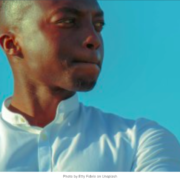Make the most of each day with these simple action steps
Dear Chris,
“What steps can I take to get the best from each day?” Karen G. wrote.
I love getting these requests from you :0)
1. Organize your day by blocking off 1 hour + chunks of time you dedicate to your priorities. Let every other requirement flow around those chunks.
2. Set three objectives that you will accomplish each day (work on these during your priority times). Keep them achievable. Don’t boil the ocean. Write four paragraphs instead of four chapters.
3. Reward yourself when you meet your three objectives. Make some Oolong tea; grab a cappuccino, take an extra walk with your dog. This practice helps you build the habit of keeping commitments to yourself.
4. Schedule time for your personal, social, familial, and other priorities each week. Sundays are a great day to set your weekly agenda so that you maintain balance and dedicate time to what’s most important in life.
5. Set boundaries and stick to them. If you don’t have the time or something is outside your expertise, say so. The people who matter will respect your boundaries and will appreciate that you are not destroying yourself trying to please everyone.
1- 5 help you put first things first, so you are focused on what matters most.
6. Give thanks. A handwritten note is powerful. A quick video, email, or text is super, too. Recognize someone for awesomeness at the store, restaurant, hospital, or other places you visit during the day.
Catch people doing something well and let them know you appreciate what they do.
7. Laugh.
8. Offer to help. There’s so much opportunity to do the little things that make a big difference. Perform random acts of kindness.
9. Exercise. Take a walk; ride your bike; go for a run; go to the (home) gym.
6 – 9 release endorphins that reduce stress, improve your mood, and boost your self-esteem.
10. Read a national paper and a local paper. Know what’s happening in the country and world as well as in your community.
11. Give people your undivided attention when you are speaking with them. Be fully present—no multitasking or smartphones.
12. Take time for personal growth. Read a book or article, watch a video, listen to a podcast.
These last three enrich your life and boost your impact.
What is your top action step to get the most from each day?






